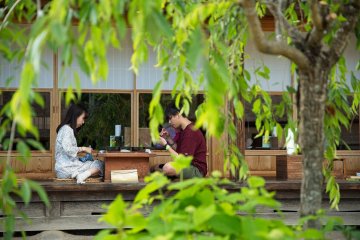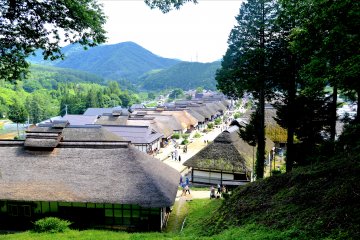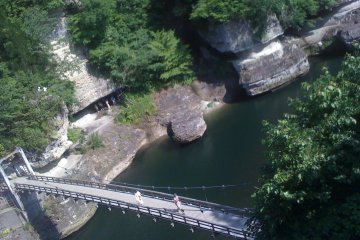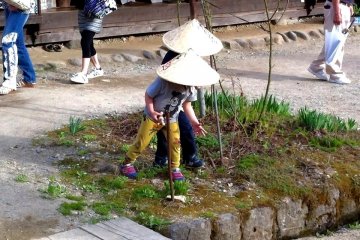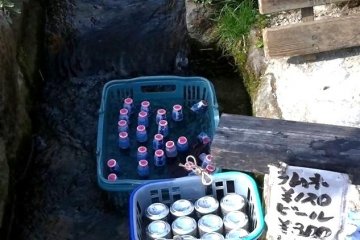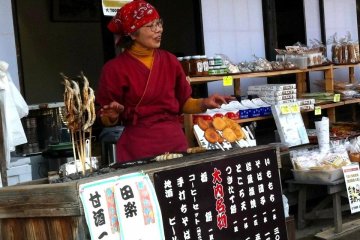In this southern part of rural Aizu, there are few towns in which you can take a rest from the snaking, snow-roof covered roads which enable travel through this vast mountain range of Fukushima Prefecture. Today, clusters of grand onsen / ryokan (hot springs / traditional inns), perched on cliffs, sharp-cut by snow-melt driven rivers, can be reached by the patient driver. In the Edo period (1603-1868), for the traders who traveled immense distances on foot, Ouchi-juku was the only postal town in the area which supplied lodgings and food.
Today, Ouchi-juku appears just as it once did in the Edo period. The village consists of a wide, dirt, road lined with thatch-roofed restaurants, shops, and inns. It is flanked by misted pine-clad hillsides, often associated with the northern Japanese landscape.
All four seasons will reward you with a fantastic visit. Ouchi-juku is perhaps most beautiful in summer, when the locals splash the bright and dry, yellow road with bucketfuls of water, and lower crates of drinks into the narrow street canals to cool. Ouchi-juku in winter is also beautiful, beneath a clear night's sky untainted by ambient city lights and noise. Lanterns, which are sculpted from snow, radiate natural candlelight out onto the dozy street. Others may argue that the cherry blossom season, which runs from late April to early May, is when Ouchi-juku is at its finest.
A day trip can be plenty for a passing visitor, but you can also sleep the night. Shops sell locally made, traditional souvenirs such as woven-straw sandals, wooden gourds, and plenty of rich, homegrown ingredients like nuts and dried tofu. Restaurants serve the local soba specialty which is served with a spoon made from leek (good luck, folks).
Many of Aizu's most esteemed onsen, which are themselves worth the journey, are nearby.



